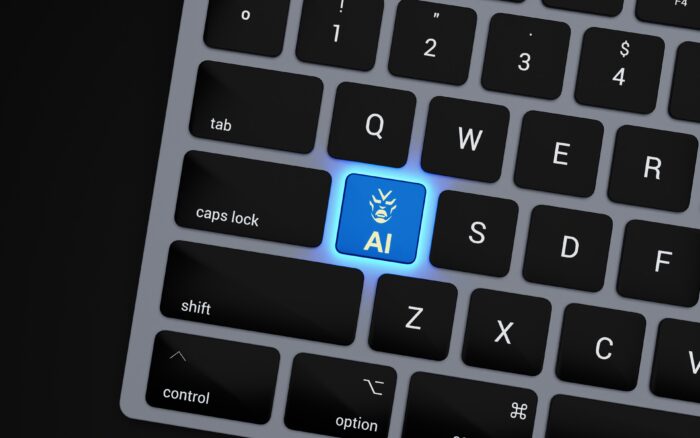The digital world has made life more convenient, but it’s also opened the door to serious cybersecurity threats. While phishing scams and weak passwords remain common issues, hackers are increasingly using lesser-known tactics to compromise both personal and business accounts. To stay safe, it’s critical to understand how these threats work, and how to stop them.
Cybersecurity Threats 2025: How Hackers Target Small Business Security Gaps
Hackers have moved beyond outdated methods. Today, cybersecurity threats include more advanced and unexpected techniques. Below, we explore several dangerous tactics that may not be on your radar—but should be.
Cookie Hijacking: A Hidden Risk
Cookies help websites remember your preferences, but hackers can also exploit them. By doing so, they impersonate you and gain access to your accounts.
Learn more from Intellicomp’s article on modern hacking methods
SIM Swapping & Port-Out Fraud
Cybercriminals can deceive mobile providers into transferring your number to their device. Then, they hijack your two-factor authentication codes and take control of your accounts.
Read Verizon’s guide to SIM swapping and how to protect your number
AI-Powered Cyber Attacks: Deepfake Impersonations Explained
Using AI-generated video or voice, attackers mimic trusted individuals. As a result, you might unknowingly share private information.
➡️ Stay informed through cybersecurity awareness training to recognise social engineering red flags.
Exploiting Third-Party Apps
Not all apps have strong security. If one gets compromised, hackers can use it to reach your main accounts. To reduce risk, regularly review third-party app permissions.
Keylogging Attacks
Keyloggers silently track everything you type. As a result, this malware can steal passwords, credit card numbers, and other personal data.
AI-Driven Phishing Emails
Thanks to AI, phishing emails now look highly personalised and legitimate. They’re far harder to detect than traditional scams.
How to Prevent Phishing Attacks and Other Cybersecurity Threats
Although the risks are growing, you can take proactive steps to protect yourself. Here are six proven strategies to defend against cybersecurity threats in 2025.
1. Use Strong Authentication
SMS-based 2FA is vulnerable. Instead, opt for app-based MFA or security keys.
2. Avoid Public Wi-Fi Without a VPN
Public networks are risky. Therefore, always use a VPN when working remotely.
3. Audit Third-Party App Access
Many apps are forgotten after installation. For this reason, audit and clean up access regularly.
4. Stay Alert to Phishing Emails
Phishing emails look increasingly real. Because of this, verification through a second channel is essential.
5. Monitor Login Activity
Account alerts help you detect suspicious activity. As a result, you can act before real damage occurs.
6. Update Software and Back Up Your Data
Updates often patch major vulnerabilities. In addition, regular backups ensure recovery in a worst-case scenario.
In conclusion, cybersecurity threats are evolving quickly. Therefore, adopting proactive habits and working with trusted IT experts is essential for keeping your data safe.
Cybersecurity for Small Business: Habits to Prevent AI-Powered Attacks
Strong cybersecurity for small business isn’t optional anymor, it’s essential. Beyond the basics, consider the following:
- Encrypt your communications to protect sensitive information
- Educate your team to recognise phishing and deepfake scams
- Use dark web monitoring in Australia to detect compromised credentials early
- Invest in Managed IT Services for 24/7 security coverage
Why Dark Web Monitoring in Australia Matters for Business Security
Cybercriminals often trade stolen credentials, personal data, and access tokens on the dark web. Without knowing it, your business information could already be exposed.
Dark web monitoring alerts you the moment your information surfaces on hidden marketplaces, giving you the chance to act before it’s exploited.
For Australian businesses, this is especially important due to local privacy laws and growing threats from global cybercrime networks. Monitoring helps:
- Reduce the impact of credential leaks
- Strengthen your cyber resilience
- Comply with cybersecurity best practices in Australia
Microsavvy offers reliable dark web monitoring across Australia, helping protect your business before a breach causes harm.
Have questions about digital security? Click below to view common cybersecurity FAQs.
Frequently Asked Questions About Cybersecurity Threats.
Click the question below to view the answer
What are cybersecurity threats?
Answer: Malicious tactics—such as phishing, malware, and credential theft—designed to access, damage, or steal digital systems and data.
How do I know if I’ve been hacked?
Answer: Watch for unusual account activity, unknown login attempts, password reset requests you didn’t initiate, or sluggish device performance.
Are small businesses really targeted by cybercriminals?
Answer: Absolutely. Small businesses are prime targets due to typically weaker security systems.
What’s the difference between a virus and a phishing attack?
Answer: A virus infects devices or software; phishing tricks users into revealing sensitive information via fake messages or websites.
How can Microsavvy help protect my business?
Answer: Microsavvy offers Dark Web Monitoring, Managed IT Services, staff cybersecurity training, and real-time threat detection.
Need help securing your business?
Book a free consultation and get tailored guidance on how to protect your business or personal data from evolving cybersecurity threats.




